

| Continental (rubicola) Stonechat April 23rd 2008 |
| A strikingly different-looking Stonechat at Eakring Flash in April 2008, showed many characteristics of the race rubicola, known as Continental Stonechat Saxicola torquata ssp.rubicola. Whilst not expecting any official identification of this bird, or it's acceptance as a genuine rubicola, I thought that it should at least be documented. | ||
| ......... | ||
| I have included many of
the photographs that I took of this bird on the day and
there is a brief written description of plumage details
obtained on the day. Initial sighting and circumstances On April 23rd 2008, a male Stonechat was found at Eakring Flash. It was favouring dead vegetation along a grass farm track which dissects two Oil-seed Rape fields, about 100yds west of Eakring Flash and was first noted at around 07:15h. The morning had dawned foggy, with greatly restricted visiblity, so I walked around Eakring village to begin surveying the local breeding birds. Whilst walking around the village, the fog began to lift into low cloud, so I walked back towards my regular vantage point, walking back round Eakring Flash on the way, towards where I had parked the car. |
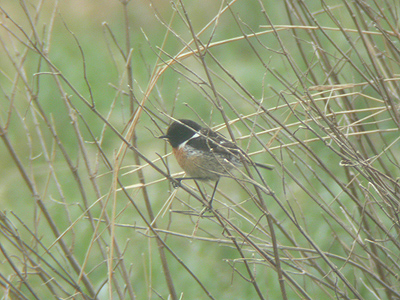 |
|
| ......... | ||
| Upon reaching
the car, I noticed a chat flitting around about 25 metres
distant and initially suspected Whinchat based on time of
year. With binoculars, I was astonished to see that it
was in fact a male Stonechat and a very distinct
individual. Part of my astonishment was because that in
11 years recording here, Stonechat has never before
produced an April record, with late Winter and early
Spring records all falling between inclusive dates of
February 21-March 29th. The occurrence of this bird comes over three weeks later than all others, but does follow an exceptional Spring passage which involved a total of 19 birds. My immediate thoughts were that this was a potential rubicola Stonechat. I began to take as many photographs as possible, to at least document the sighting. The light was 'flat' as it was overcast and it had also started to rain steadily. The bird was flightly and difficult to approach. Description (Through binoculars only) When perched, the bird appeared extremely dark on all upper surfaces, noticeably white along the flanks and becoming a light buff colour down towards the belly, where it became off white. The orange patch on the breast was clearly demarcated from the white extending up from the belly. When flying away from me, the upperside of the body and wings, gave the impression of an almost black bird, with bold white wing bars and a very conspicuous pure white rump. The whole of the head (including the crown) appeared jet black, with no discernable difference in shade from the crown as I would have expected from a typical hibernans. |
||
| Photographs
Photographs A-I show the rubicola type bird of April 23rd 2008. Below these, I have incuded some photographs of a typical male hibernans Stonechat (photographs J-M) from March 2008, for comparison of plumage differences and tones etc. Photographs A-I show how dark this bird was on the mantle, scapulars and all coverts, with the feather edging on the being a dull, olive brown, but giving the plumage tones a much colder feel compared to hibernans. The tertials had the same colouration, but both secondaries and primaries were only a slightly lighter shade, which was not noticeable in flight, but again the edges had a cold feel compared to hibernans. |
||
| Possible male rubicola Stonechat, photographed at Eakring Flash on April 22nd 2008 | ||
| Photo A | .... | Photo B |
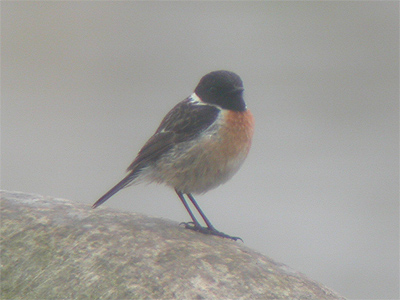 |
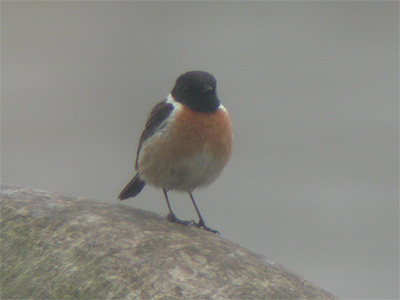 |
|
| Photo C | .... | Photo D |
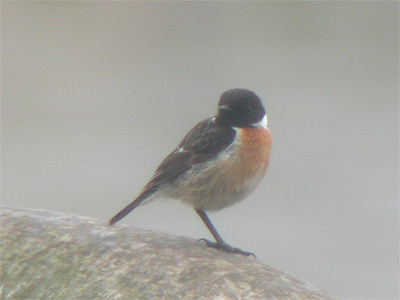 |
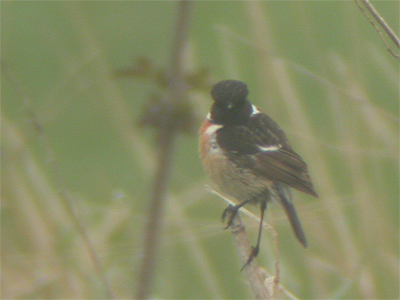 |
|
| Photo E | .... | Photo F |
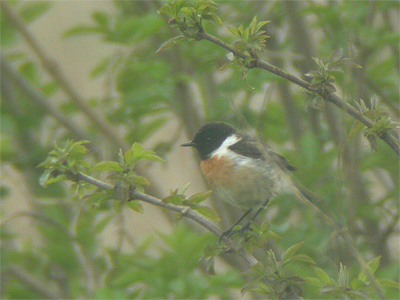 |
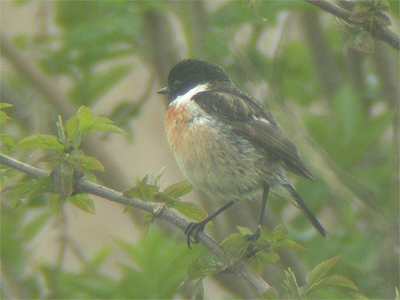 |
|
| Photo G | .... | Photo H |
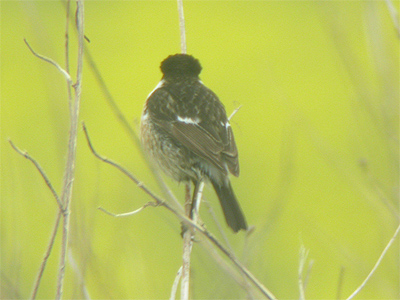 |
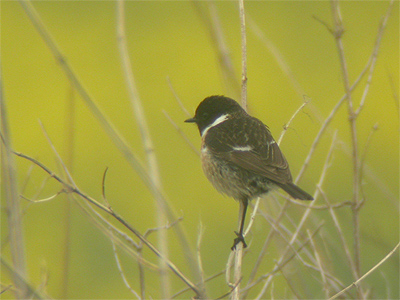 |
|
| Photo I | .... | .... |
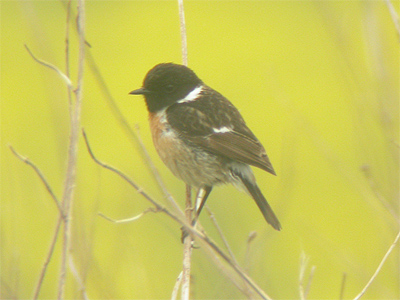 |
||
| .... | .... | .... |
| Male hibernans Stonechat, photographed at Penny Pasture Common on March 19th 2008 | ||
| Photo J | Photo K | |
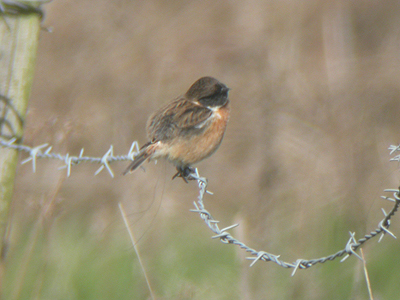 |
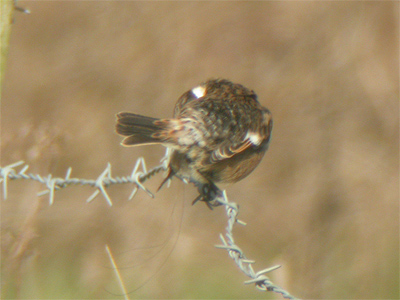 |
|
| Photo L | .... | Photo M |
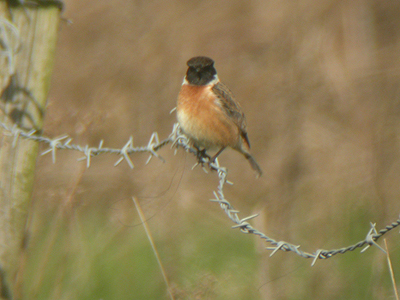 |
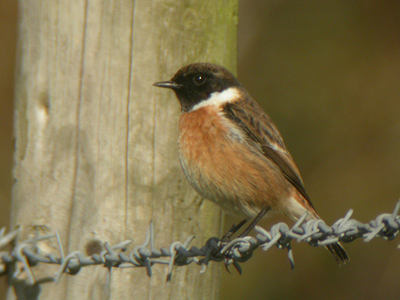 |
|
| Summary The bird remained at Eakring Flash from early morning until dusk. It initially favoured a grass track and rough vegetation near Eakring Flash, but then relocated to the north-eastern corner of Eakring Flash, where it remained for the rest of the day. Two further visits were made during the afternoon and then again late evening, to try and obtained further photographs, both of which proved to be unsuccessful. There was no sign of the bird the following day. Throughout it's stay, it fed continuously in typical Stonechat fashion. Apart from this being such a distinctive bird, the late date also led me to suspect a possible rubicola Stonechat. Unfortunately, I never got to photograph the bird's distinctive white rump for comparison with the hibernans photo showing such. However, with at least some photographic evidence available, I cannot see this bird as being hibernans. A potential pitfall that might raise it's head, is that this bird was at Eakring and not at a site like Netherfield, Hoveringham or Lound etc. As far as I am aware, there are currently no accepted records of rubicola Stonechat in the UK. I would like to hear other people's opinions on this bird. E-mail me @ eakringbirds.co.uk |